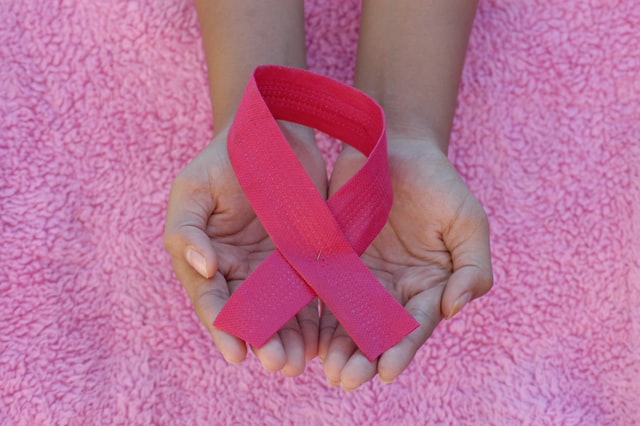Do You Know These Top Cancer Warning Signs?

Cancer is a highly challenging and complex disease that can affect any part of the body, and early detection is crucial forimproving treatment outcomes. Some cancers present warning signs that shouldn’t be ignored, and recognizing these early symptoms can lead to faster diagnosis, which, in turns, leads to more effective treatment.
In this article, we’ll explore the top warning signs of specific cancers, including throat cancer, lung cancer, and skin cancer. While these symptoms don’t always indicate cancer, you should still seek medical advice if you experience any of them for an extended period.
Throat Cancer Warning Signs
Throat cancer, which can affect the pharynx, larynx (voice box), or tonsils, often presents subtle symptoms that may be mistaken for common illnesses. However, understanding the vital signs of throat cancer can help with early detection.
1. Persistent Sore Throat
A sore throat that doesn’t improve after a few weeks, even with treatment, can be an early warning sign of throat cancer. While sore throats are often caused by infections, prolonged discomfort without a clear cause should be evaluated by a doctor.
2. Difficulty Swallowing (Dysphagia)
If swallowing becomes painful or you experience frequent choking or the sensation that food is getting stuck in your throat, this may indicate a growing tumor in the throat or esophagus.
3. Hoarseness or Voice Changes
A hoarse voice or changes in vocal quality that last longer than two weeks without an obvious reason, such as a cold, could be an early sign of throat cancer, particularly cancer of the larynx.
4. Ear Pain
Throat cancer can cause referred pain to the ears, even when there’s no ear infection present. Persistent ear pain should be discussed with a doctor, especially if it’s accompanied by other throat symptoms.
5. Lump or Swelling in the Neck
If you have found a lump or swelling in your neck, particularly in the lymph nodes, it may suggest throat cancer or that the cancer has spread. Any unexplained lump that persists should be checked by a healthcare provider.
When to see a doctor: If you experience any of these symptoms for more than two weeks, especially if you have risk factors like smoking or heavy alcohol use, consult with a healthcare provider for further evaluation.
Lung Cancer Warning Signs
The type of cancer has one of the highest mortality rates, often because it’s only diagnosed in later stages. Early signs of lung cancer can be subtle, but being aware of the symptoms can help with early detection.
1. Chronic Cough
A persistent ongoing cough that lasts more than a few weeks, especially if it worsens or doesn’t improve with treatment, may be an early sign of lung cancer. This is particularly concerning for smokers.
2. Coughing Up Blood
Even small amounts of blood when you cough (hemoptysis) is a serious symptom and should prompt immediate medical attention.
3. Shortness of Breath
Difficulty breathing, wheezing, or feeling out of breath during normal activities can indicate lung cancer. This symptom often develops slowly and may be mistaken for other respiratory conditions.
4. Chest Pain
Persistent chest pain that worsens with deep breathing, coughing, or laughing can be a key sign of lung cancer, especially if it’s accompanied by other respiratory symptoms.
When to see a doctor: If you have any of these symptoms, especially if you’re a smoker or have a history of smoking, talk to your doctor about undergoing screenings, including low-dose CT scans.
Skin Cancer Warning Signs
Skin cancer, such as melanoma, is one of the most common types of cancer. Fortunately, it’s also one of the most preventable and treatable if caught early on. Regular skin checks are key to early detection.
1. New or Changing Moles
One of the most common signs is a mole that changes in size, colour, or shape. The “ABCDE” rule can help to identify suspicious moles:
- Asymmetry: One half of the mole doesn’t match the other.
- Borders: The edges are irregular or blurred.
- Colour: There are multiple colours or shades within the mole.
- Diameter: The mole in question is larger than 6 mm (about the size of a pencil eraser).
- Evolving: The mole is changing over time in size, shape, or colour.
2. Sores That Don’t Heal
A sore that doesn’t heal or reappears after healing can be a warning sign of skin cancer, particularly if it’s located on areas exposed to the sun.
3. Itching, Tenderness, or Bleeding
If a mole or skin lesion becomes itchy, painful, or starts to bleed, it should be evaluated by a dermatologist.
When to see a doctor: If you notice any new moles, changes in existing moles, or persistent sores, schedule an appointment with a dermatologist for a skin check.
Wrapping Up
Recognizing cancer warning signs is an essential step in early detection, which greatly improves treatment outcomes. Whether it’s throat cancer, lung cancer, or skin cancer, paying attention to persistent symptoms and seeking medical advice early on can make all the difference. Regular checkups and screenings, along with awareness of these warning signs, are key in catching cancer early when it’s most treatable.
If you or a loved one experiences any of the symptoms mentioned in this article, consult with a healthcare provider for further evaluation and testing. Remember, early detection can save lives.

